Plenary Speakers
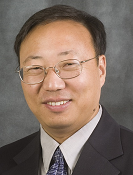 Prof. Dr. Albert C. J. Luo
Prof. Dr. Albert C. J. Luo
Southern Illinois University Edwardsville, USA
Title: Infinite Unstable Periodic Orbits to Infinite Homoclinic Orbits in the Lorenz System
Abstract: In nonlinear dynamics, homoclinic orbits are very essential for a better understanding of the corresponding global dynamics. However, it is very difficult to determine homoclinic orbits in 3-D or higher-dimensional nonlinear dynamical systems. In this talk, the routes from unstable periodic orbits to infinite homoclinic orbits are presented in the Lorenz system, and such homoclinic orbits are pertaining to unstable periodic orbits on bifurcation trees. Thus, a semi-analytical method is presented for determining unstable periodic orbits. This is because traditional computational methods cannot obtain unstable periodic orbits in nonlinear dynamical systems due to computational errors and perturbations. For demonstration, a period-doubling bifurcations tree of the period-1, period-2 and period-4 motions are presented. Periodic orbits and homoclinic orbits in the Lorenz system are illustrated through 3-D views, from which one can imagine complex stable and unstable periodic motions and the Lorenz attractors. Further, the corresponding mathematical structures of homoclinic orbits and Lorenz attractors can be further developed.
 Prof. J. A. Tenreiro Machado
Prof. J. A. Tenreiro Machado
Institute of Engineering, Polytechnic of Porto, Portugal
Title: The Logical Song
Abstract: Data analytics is penetrating in all areas of the human activity. The availability of data measuring the behavior of complex phenomena allows a new quantitative perspective not conceivable with classical mathematical tools. This presentation addresses 3 distinct areas of key impact in society and that reflect the behavior of men kind. We consider music, artistic painting and soccer as manifestations of the human spirit that can be processed and analyzed, since large volumes of data are presently available in digital form. The data records are studied using several mathematical and computational tools, such as, fractional calculus, entropy, multidimensional scaling, hierarchical clustering and scientific visualization. The embedding of mathematical, computational and algorithmic modeling leads to the emergence of patterns that are analyzed and interpreted.
 Prof. Sverre Holm
Prof. Sverre Holm
University of Oslo, Norway
Title: Fractional Wave Equations and Complex Acoustic Media
Abstract: Wave equations with non-integer derivative operators can describe attenuation which increases with frequency with other powers than two, unlike ordinary wave equations. Such attenuation is found in many complex media. Both shear and compressional waves in media as diverse as biological tissue, rocks, and sub bottom sediments are examples of this. These wave modes are central in applications such as medical ultrasound, diagnostic shear wave imaging in elastography, seismics, and underwater acoustics. These equations can be divided into two classes depending on whether they can be derived from more fundamental principles or not. In the first class one can find the fractional Kelvin-Voigt and fractional Zener wave equations, while several fractional Laplacian wave equations are in the second category. Such examples as well as the properties of their solutions will be presented. In many cases just having such a wave equation is enough to model a phenomenon.
In [Holm, S. (2019). Waves with power-law attenuation. Springer and ASA (Acoustical Society of America) Press] I also wanted to understand what it is about complex media that gives rise to power law behavior. The main attenuation mechanisms of standard acoustics are heat conduction and relaxation, structural relaxation, and chemical relaxation. They have fractional parallels and the first one is heat relaxation described by fractional Newton cooling due to anomalous diffusion. The most important mechanism is however the second one, the fractional parallel to structural relaxation. Instead of one there are multiple relaxation processes with a distribution of relaxation times that follows a power-law distribution, possibly indicating that the material has fractal properties. This distribution also has a relationship to the Arrhenius equation, indicating a link to chemical relaxation, albeit a quite speculative one.
Other sources of power-law behavior can be non-Newtonian rheology with time-varying viscosity and propagation when there is a fractal distribution of scatterers in an otherwise lossless medium. Existing models in sediment acoustics such as the grain shearing model and the Biot poroelastic model can also be reformulated with fractional operators. These approaches are presented in the hope of coming one step closer to answering if fractional wave equations give clues to some deeper reality, or if they are just a compact phenomenological description.
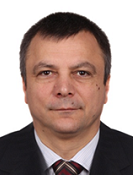 Prof. Dumitru Baleanu
Prof. Dumitru Baleanu
Cankaya University, Turkey
Title: On Singular and Non-Singular Fractional Operators and Their Applications in Mathematical Biology
Abstract: The fractional calculus and its applications is a hot topic for researchers from many branches of science and engineering. Real world applications started to be investigated with a great sucees within this very helpful mathematical tool. In my talk I will concentrate on the sucessful applications of both singular and non-singular fractional operators to the complex dynamics of some mathematical biology systems. Besides, some new aspects of the classifcation of fractional operators will be presented. Illustratives examples will be provided.
 Prof. Gerhard-Wilhelm Weber
Prof. Gerhard-Wilhelm Weber
Poznan University of Technology, Poland
Title: Defined Contribution Pension Funds by Robust Stochastic Optimal Control
Abstract: In the present work, we study the problem of optimal management of defined contribution pension funds, during the distribution phase, under the effect of inflation, mortality, and model uncertainty. More precisely, we consider a class of employees, who, at the time of retirement, enter a life assurance contract with the same insurance firm. The fund manager of the firm collects the entry fees to a portfolio savings account and this wealth is to be invested optimally in a Black-Scholes type financial market. As such schemes usually last for many years, we extend our framework, by: (i) augmenting the financial market with an inflation-adjusted bond, and (ii) taking into account mortality of the fund members. Model uncertainty aspects are introduced as the fund manager does not fully trust the model he/she faces. By resorting to robust control and dynamic programming techniques, we provide: (a) closed-form solutions for the case of the exponential utility function, (b) a detailed numerical study of the qualitative features of the problem at hand that elucidates the effect of robustness and inflation on the optimal investment decisions.
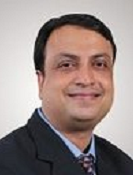 Prof. Praveen Agarwal
Prof. Praveen Agarwal
Anand International College of Engineering, Jaipur, India
Title: Certain Generalization of Fractional Derivative Operators
Abstract: Many authors have introduced and investigated certain extended fractional derivative operators. The main object of this talk to study extended fractional differential operators(such as the Riemann-Liouville and Caputo type fractional operators) involving generalized hypergeometric functions introduced recently and investigate its various (potentially) useful and (presumably) new properties and formulas, for example, integral representations, Mellin transforms, generating functions, and the extended fractional derivative formulas for some familiar functions.
INVITED SPEAKERS
 Prof. Jordan Hristov
Prof. Jordan HristovUniversity of Chemical Technology and Metallurgy, Bulgaria
Title: Fractional Operators with Non-Singular Memories in Viscoelasticity: Basic Concepts Applicable to Linear and Non-Linear Viscoelasticity
Abstract: The fractional operators with non-singular memory kernel described by exponential (Caputo-Fabrizio derivative) and generalized Mittag-Leffler function (Atangana-Baleanu derivative) raise many questions about their properties and mainly about their physical relevance and applications.
This lecture focuses on basic principles in description relaxation behaviors of linear and non-linear viscoelastic materials and the adequate selection of the memory kernels of the fractional operators leading to both derivatives with singular or non-singular memories.
The targets are non-aging (linear and non-linear) viscoelastic materials with behaviors beyond the power-law limit related to the Caputo fractional derivative. The stress-strain response functions are the main physical objects allowing selecting the corresponding memories of the fractional operator sand their constructions. As a consequence of the memory kernel selection, the causality of both the constitutive equations and the frequently used rheological equations are discussed.
 Prof. Carla Pinto
Prof. Carla PintoSchool of Engineering, Polytechnic of Porto, Portugal
Title: Tackling specificities of different diseases using within-host models
Abstract: Epidemics make exciting news. They are often presented with dramatic headlines, and the pictures accompanying them are of healthcare workers dressed with protective equipment or working at labs. People often forget about the behind scenes work of mathematicians, who, with more or less simplified models, help on the understanding and prediction of infections spread. In this lecture I will focus on several within-host models useful for a deeper knowledge of virus dynamics with different specificities, namely HIV, HCV, HSV-2, etc.
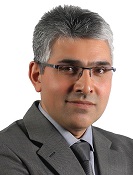 Prof. Huseyin Merdan
Prof. Huseyin MerdanTOBB University of Economy and Technology, Turkey
Title: Nonlinear dynamics of a ratio-dependent prey-predator model: Stability, bifurcations and chaos
Abstract: Nonlinear dynamical behaviors of a prey-predator system with Leslie type will be presented. First, the dynamics of its continuous form will be analyzed; the local and global stabilities and bifurcations will be discussed. Second, the dynamical behavior of its discrete form will be analyzed; bifurcations and chaotic behavior will be shown. Numerical simulations will be given to support and extend the theoretical results. Finally, we will compare the results that we obtained.
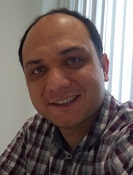 Assoc. Prof. Amin Jajarmi
Assoc. Prof. Amin JajarmiDepartment of Electrical Engineering, University of Bojnord, Iran
Title: Recent developments in the mathematical modelling and control of biological systems
Abstract: Recently, the new aspects of fractional calculus have been widely employed to investigate different features of many complex biological systems. In this direction, fractional models help us to understand how the memory of the certain components of a system affects the progress of diseases as a whole, and therefore, it enables us to implement the memory effects into the evolution of considered system together with its environment. This kind of analysis is also important in order to improve the current medications and to explore new ways of quick, effective and low-cost treatments. In this talk, we explore a recent development in the mathematical modelling of biological systems. The complex dynamics of an epidemic are investigated within the use of both classical and a new fractional framework. The obtained results are analyzed by the help of some simulations in a comparative way for both integer- and fractional-order cases. Finally, an efficient control scheme is designed for the purpose of intervention in an appropriate, effective way.